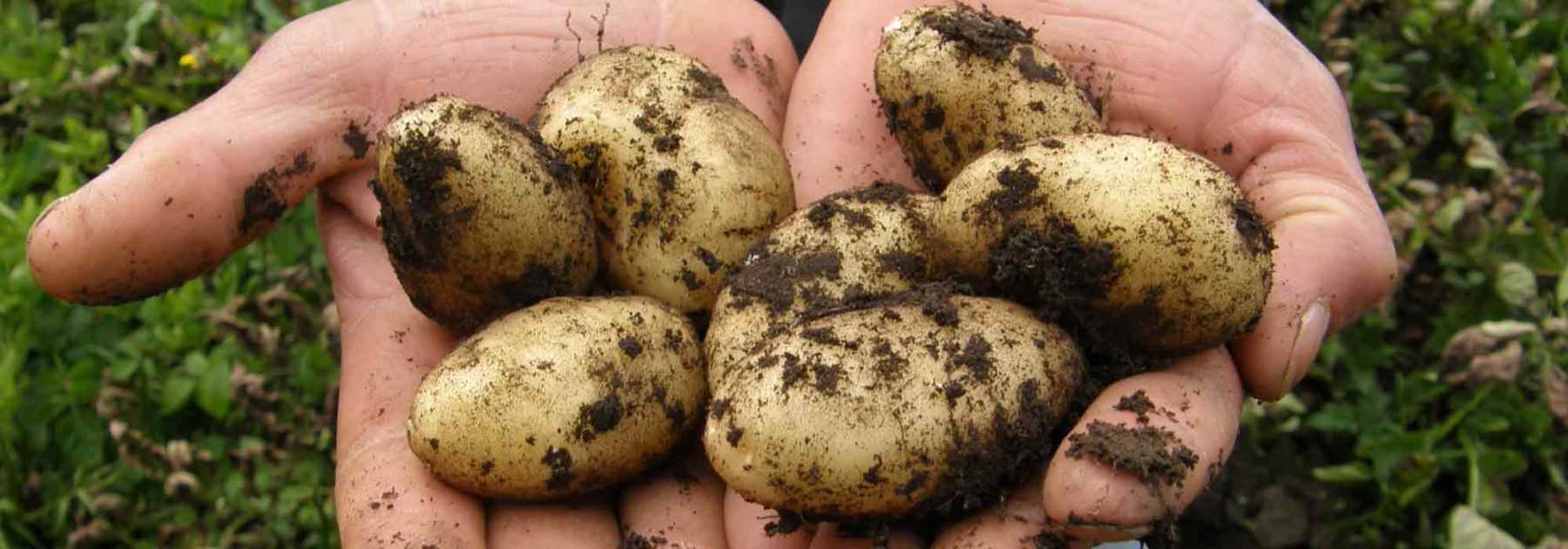
The potato: planting, growing, harvest
Contents
The potato in a nutshell
- The potato is a herbaceous plant from the same family as the tomato, the Solanaceae.
- Its edible tubercle is eaten cooked throughout the entire world.
- Originating from South America, it is cultivated as an annual.
- Easy to grow, it thrives in full sun, and in rich, deep soil.
- The tubercle of the potato is rich in vitamins and minerals.
- All parts of the plant are toxic, even the tubercle if sprouted or turned green.
Our expert's advice
The Potato, Solanum tuberosum in Latin, is a stem vegetable (commonly associated with root vegetables), belonging to the Solanaceae family.
Originating from South America, the potato is a perennial plant cultivated as an annual in our latitudes. It is moreover easy to grow in humus-rich, light and not too moist soil, with a sunny exposure.
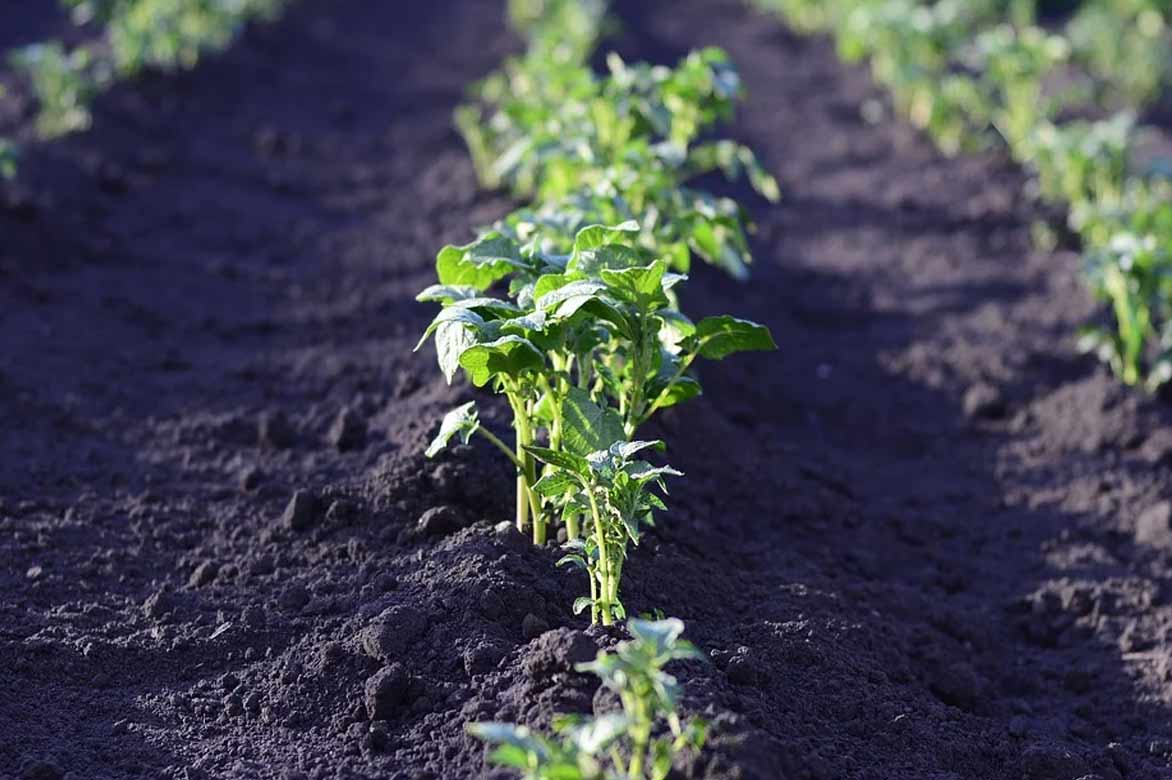
Highly productive, there are numerous varieties of potatoes, from the earliest to the latest. They can be divided into three main categories: firm-fleshed varieties, floury potatoes, and those with tender flesh.
The edible tubercle is rich in carbohydrates, potassium, magnesium and fibre. These qualities make it one of the staples in our vegetable gardens and on our plates. Always eaten cooked, there are hundreds of potato recipes.
Description and botany
Botanical data
- Latin name Solanum tuberosum
- Family Solanaceae
- Common name potato, spud, tater, Irish potato, white potato
- Flowering June to September
- Height 50 cm to 1 m
- Exposure sunny
- Soil type light, rich, not too moist
- Hardiness not hardy
The potato, colloquially known as “spud”, originates from the Andes mountains in South America, where it has been cultivated for nearly 8,000 years. It was only introduced to Europe towards the end of the 16th century.
A herbaceous plant, Solanum tuberosum belongs to the nightshade family, just like the tomato. The term potato refers both to the edible tuber and the plant itself.
The potato has an upright habit and can grow up to 1 m tall. Its highly ramified root system is capable of penetrating the soil to a depth of 0.8 m. The compound leaves are deciduous, alternate, and measure between 10 and 20 cm long.
The potato has fleshy aerial stems, green or occasionally red-purple, from which the foliage emerges, and underground stems called rootstocks, from which the tubers form. From a botanical perspective, it is therefore a stem vegetable, with the tubers being modified underground stems rather than roots. The tubers serve as nutrient storage organs. Their size, shape and colour may vary depending on the variety. Typically, the tuber’s skin is yellow, but it can also be red, black, or pink. Similarly, the flesh is usually white or more or less yellow, but may also be pink or purple depending on the variety.
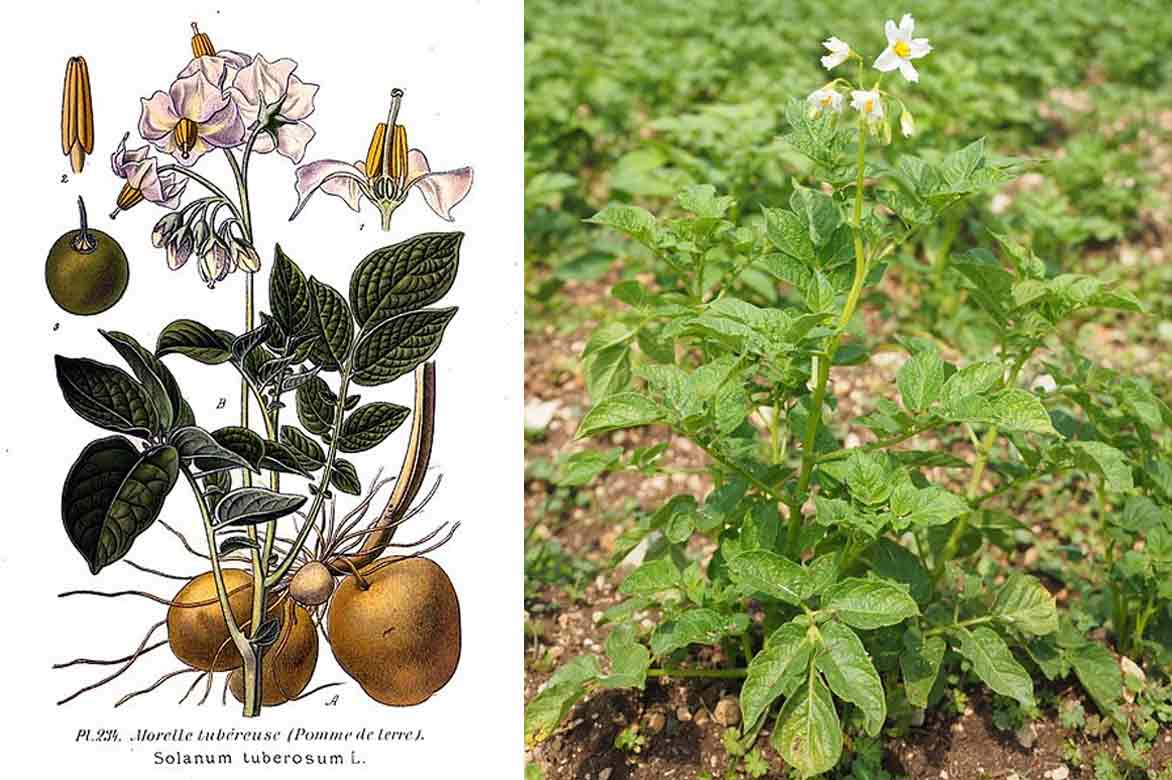
The inflorescence of the potato forms at the end of the stem and consists of between 1 and 30 flowers depending on the cultivar. These flowers, 3 to 4 cm in diameter, have a corolla that is white, blue, purple, or even violet, with yellow stamens.
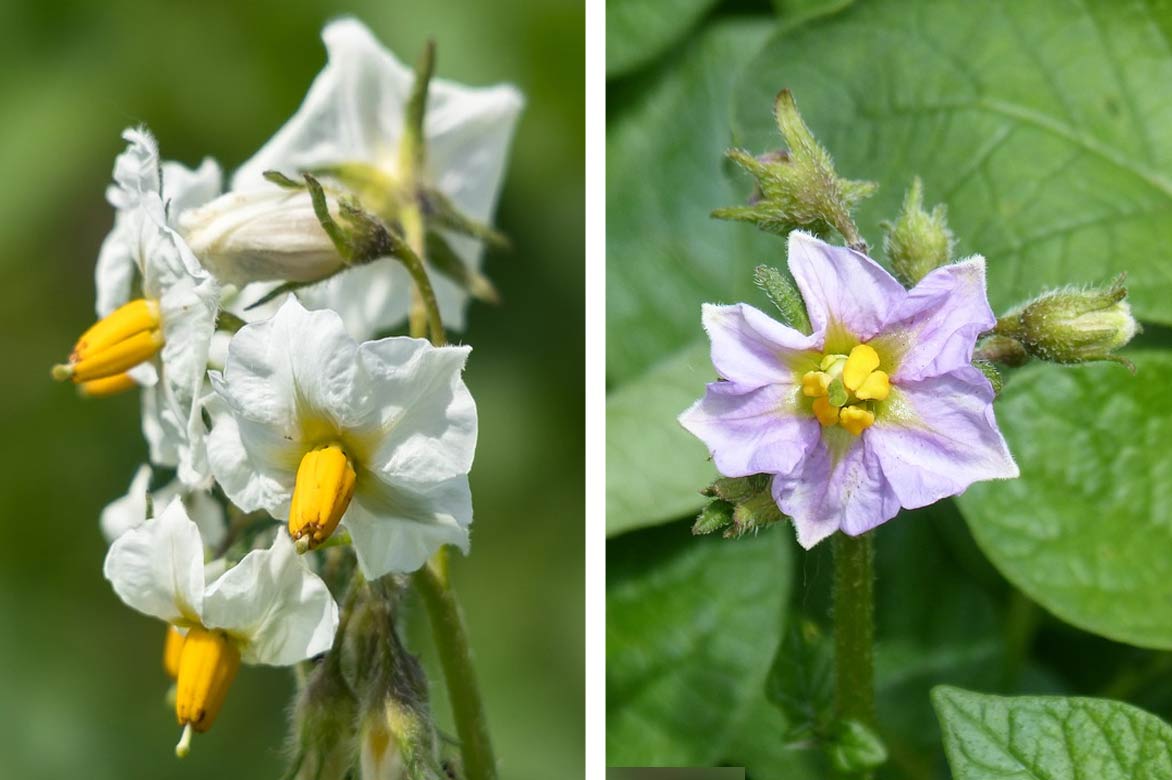
The potato produces seeds through self-fertilization. The fruit takes the form of berries that are spherical, elongated or ovoid, 1 to 3 cm in size, and green, yellowish, reddish-brown, or purple in colour. These berries closely resemble small tomatoes, but they are toxic, as is the rest of the plant (including sprouted or greened tubers). The berries, clustered in terminal groups, contain between 200 and 400 seeds that are flattened, oval or kidney-shaped, and white, yellow or yellowish-brown.
Read also
Growing, Harvesting and Storing PotatoesMain species and varieties

Potatoes Mona Lisa
- Height at maturity 60 cm
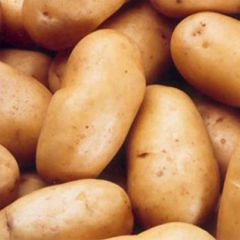
Solanum tuberosum 'Charlotte'
- Height at maturity 60 cm
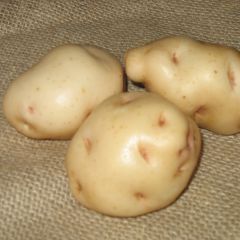
Potatoes Institut de Beauvais
- Height at maturity 60 cm
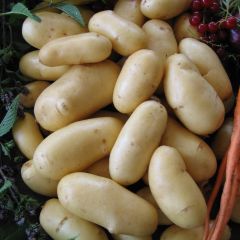
Solanum tuberosum 'Belle de Fontenay'
- Height at maturity 60 cm
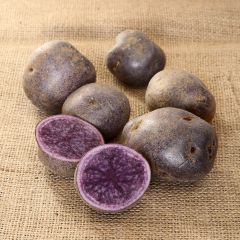
Potatoes Blue d'Artois
- Height at maturity 60 cm
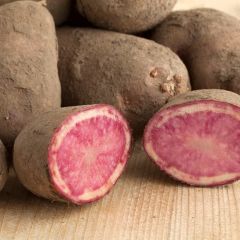
Potatoes Rouge des Flandres
- Height at maturity 60 cm
Discover other Seed potatoes
View all →Available in 1 sizes

Available in 3 sizes
Available in 1 sizes
Available in 1 sizes
Available in 1 sizes

Available in 1 sizes
Available in 1 sizes
Available in 1 sizes
Available in 2 sizes
Available in 2 sizes
Planting potatoes
Where to Plant Potatoes?
Potatoes thrive in deep, humus-rich soil and sunny locations. The chosen spot should therefore be well-exposed to light, or even in full sun.
Also, ensure proper crop rotation to prevent the spread of diseases. Cereal crops (such as wheat) are generally the most favourable predecessors for potato cultivation.
When to Plant Potatoes?
Under cover, “early” potatoes that have sprouted can be planted as early as February. Other varieties are planted outdoors between mid-March and May, in soil at 10°C.
How to Plant Potatoes?
There are three main methods for growing potatoes: traditional hilling, mulching, and planting in towers (or growing in bags).
Traditional Planting
With this method, potato tubers are buried in the soil.
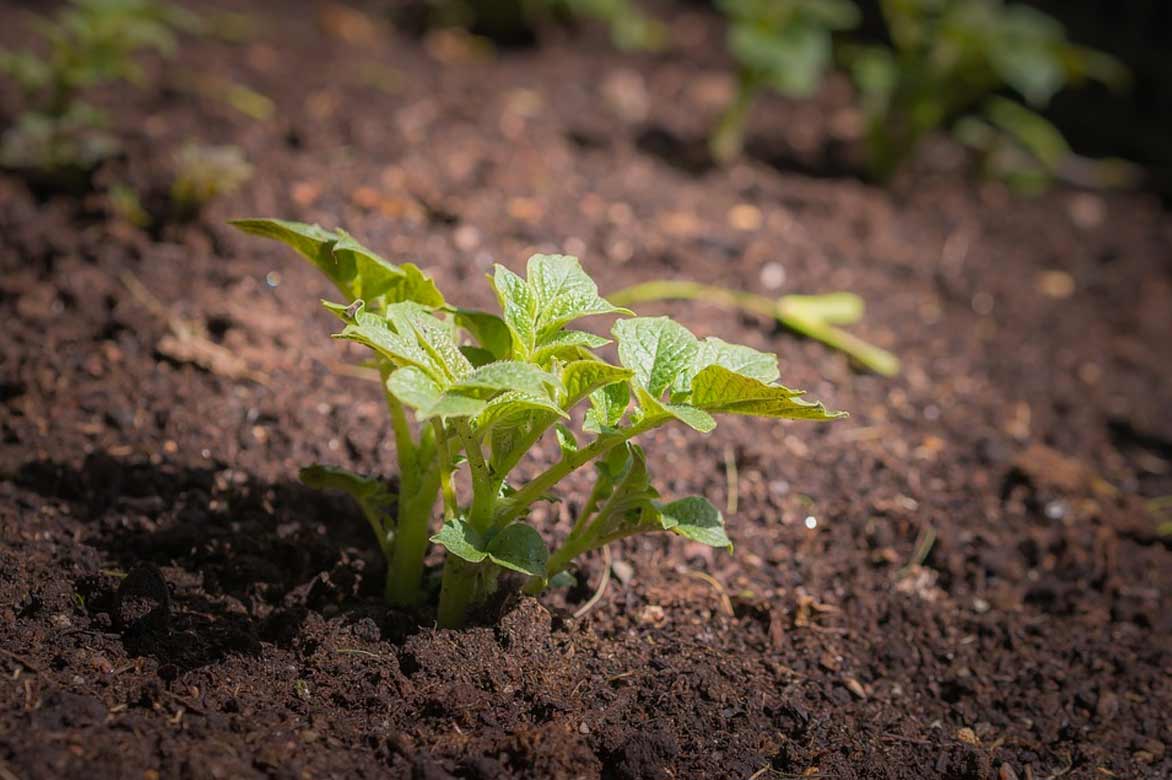
- In autumn before planting potatoes, ensure to loosen the soil and add well-rotted compost, working it in to a depth of 5 cm. Allow about 3 kg of compost per m2 of soil, at minimum.
- To speed up harvesting, the potatoes should already have sprouted. In January, place the tubers in trays in a bright, cool, frost-free room.
- In spring, once the risk of frost has passed, create furrows spaced 50 to 70 cm apart in the soil, and plant the sprouted tubers 10 cm deep, spacing them 35 to 40 cm apart. Cover them gently with a few cm of soil, without compacting too much, and water if the weather is dry.
- About two weeks later, once the young plants are well established, earth up the stems for the first time by mounding soil around the potatoes to form a ridge. Repeat this process once or twice during their growth.
- Water during prolonged dry spells.
Mulch Planting
This technique involves placing the tubers on the soil surface before covering them with a thick layer of mulch. To shield them from light throughout their growth, this mulch must be replenished regularly. This cultivation method is known for its higher productivity compared to traditional hilling. It also makes harvesting easier, as potatoes can be collected by hand without tools, reducing damage to the tubers and ensuring better long-term storage. However, your mulch may attract voles, which are fond of this vegetable.
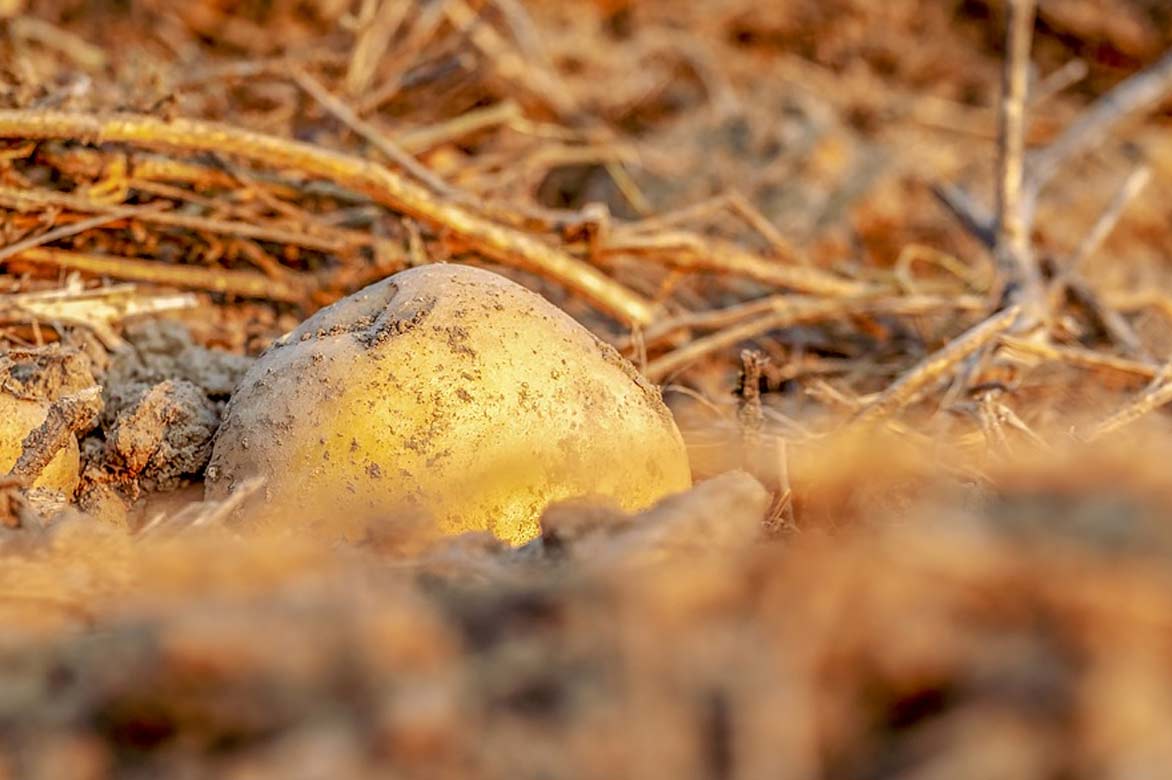
- Start by sprouting the potatoes using the same method as above.
- In spring, mark out and mow the grassy area designated for potato cultivation.
- Place the sprouted tubers directly on the short grass meadow, spacing them 30 cm apart for early varieties and 40 to 50 cm for maincrop potatoes.
- Add a mix of compost and garden soil directly over the tubers.
- Cover with a 15 cm-thick layer of dry mulch (such as straw, dried grass, etc.) mixed with compost. Note: never use fresh grass clippings.
- Top with a good mulch of dried grass, straw, dead leaves, or ramial chipped wood (RCW).
- Water lightly at planting, then only during prolonged heat.
Note: With this method, you don’t need to plant in rows.
Tower Planting
Planting potatoes in bags or towers is an effective method for growing this vegetable in small spaces, such as balconies, terraces, courtyards, or even small gardens. It’s even a highly productive soilless cultivation technique, ideal for urban gardening.
- Again, planting should be done using pre-sprouted potato tubers.
- Use a very tall plastic bag and puncture several holes in the bottom. Fold down the edges to keep the bag open and shorten it.
- Fill the bag with 5 to 10 cm of well-rotted compost, place a sprouted potato inside, then cover with another layer of compost.
- When the stems and leaves reach 8 to 10 cm in height, unfold the bag’s edges and fill it again with compost. Repeat this process as your potato plants grow, never covering the topmost leaves.
- Water the substrate regularly.
Harvest, storage and use
The harvest
New potatoes are harvested before reaching full ripeness, when their flowers fade. For other varieties, however, wait until the leaves turn yellow.
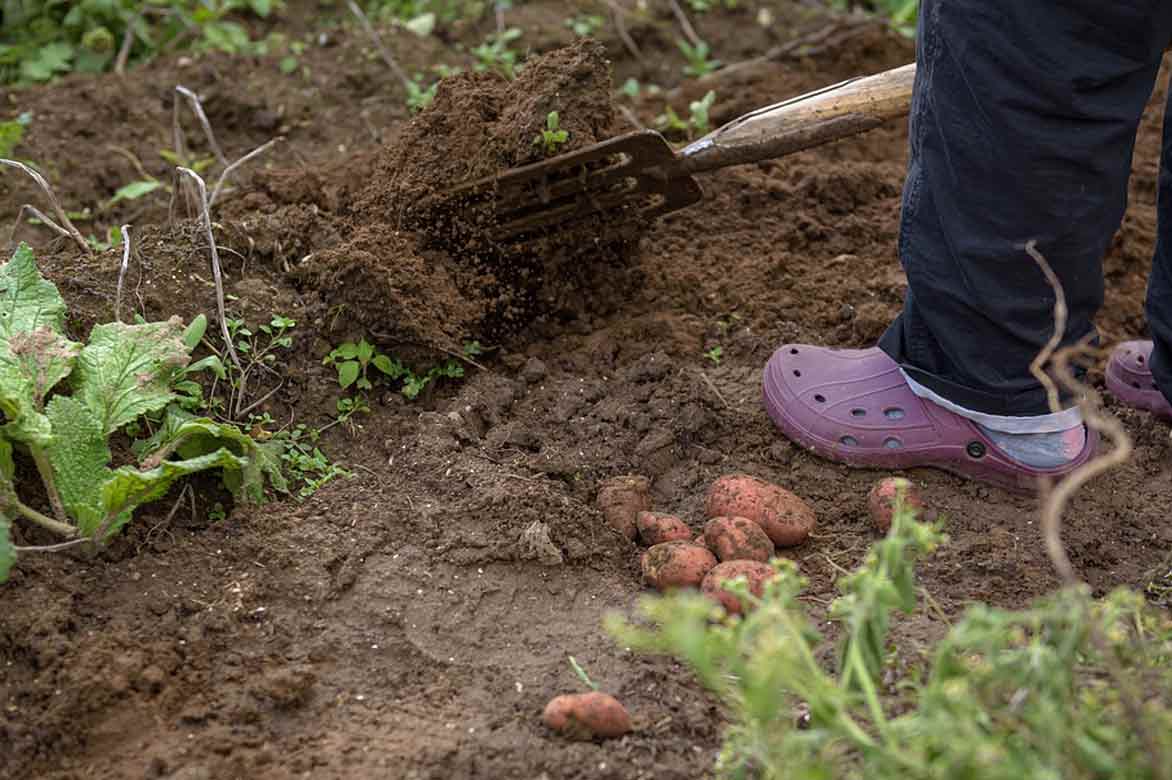
Harvest during dry weather, preferably when no rain is expected for several days.
Use a garden fork or a blunt digging fork, and lift the young plants of potatoes. Proceed gently to avoid damaging the tubercles. If you’ve chosen to grow under mulch, simply lift the straw to “pick” the tubercles by hand.
Tip: To ensure optimal storage conditions, let the potatoes dry in the sun for 24 to 48 hours.
Storage
Certain varieties of potatoes are particularly suited for long-term storage over several months, such as ‘Désirée‘, ‘Nicola‘, or ‘Samba‘.
Place the tubercles in a jute sack or wooden crate, and store them in a dry, cool, dark, and well-ventilated room.
Culinary uses
Baked, steamed or boiled potatoes… This tubercle must always be cooked before consumption. Mashed, hachis parmentier, Swedish-style potatoes, chips, salads… There’s an incredible variety of potato recipes with endless possibilities.
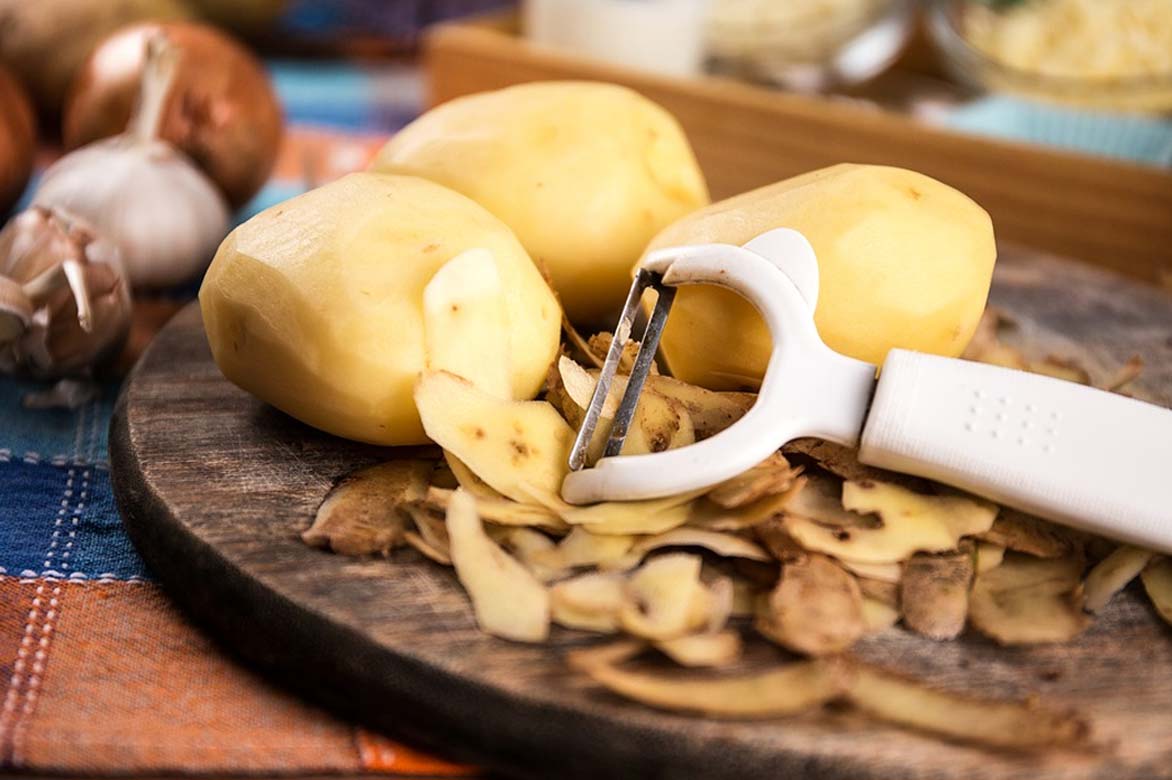
Not all varieties are suited however for the same preparations. It’s important to distinguish between the different categories of potatoes:
- firm-fleshed varieties, which hold up perfectly when boiled or steamed, are ideal for salads, cooked in their jackets, or sautéed.
- Soft-fleshed potatoes also hold up well when boiled or steamed, and are perfect for mash, gratins and baking.
- Floury varieties don’t hold their shape as well when boiled or steamed, making them perfect for soups, gratins and mash, but also for chips due to their low oil absorption.
Health benefits
Potatoes are rich in carbohydrates, as well as potassium, magnesium and fibre. They are therefore a complete vegetable which, as part of a varied diet, contributes to good nutritional balance.
Note that the cooking method affects the potato’s qualities. When boiled, it’s richer in potassium and has diuretic properties. It also provides more vitamin C when baked. It even has anti-scurvy properties, scurvy being a disease caused by vitamin C deficiency in the diet. Steamed potatoes contain the potassium and magnesium needed for muscle cell contraction.
As long as they’re not fried in fat, potatoes are a dietary food that can perfectly be included in a low-calorie diet.
They’re also recognised for their soothing properties against gastric pain.
Care and Maintenance of Potatoes
Earthing up potatoes
If you’ve chosen traditional planting, you’ll need to earth up your young plants of potatoes once or twice during their growth. Earthing up helps promote tubercle formation and prevents them from turning green when exposed to light.
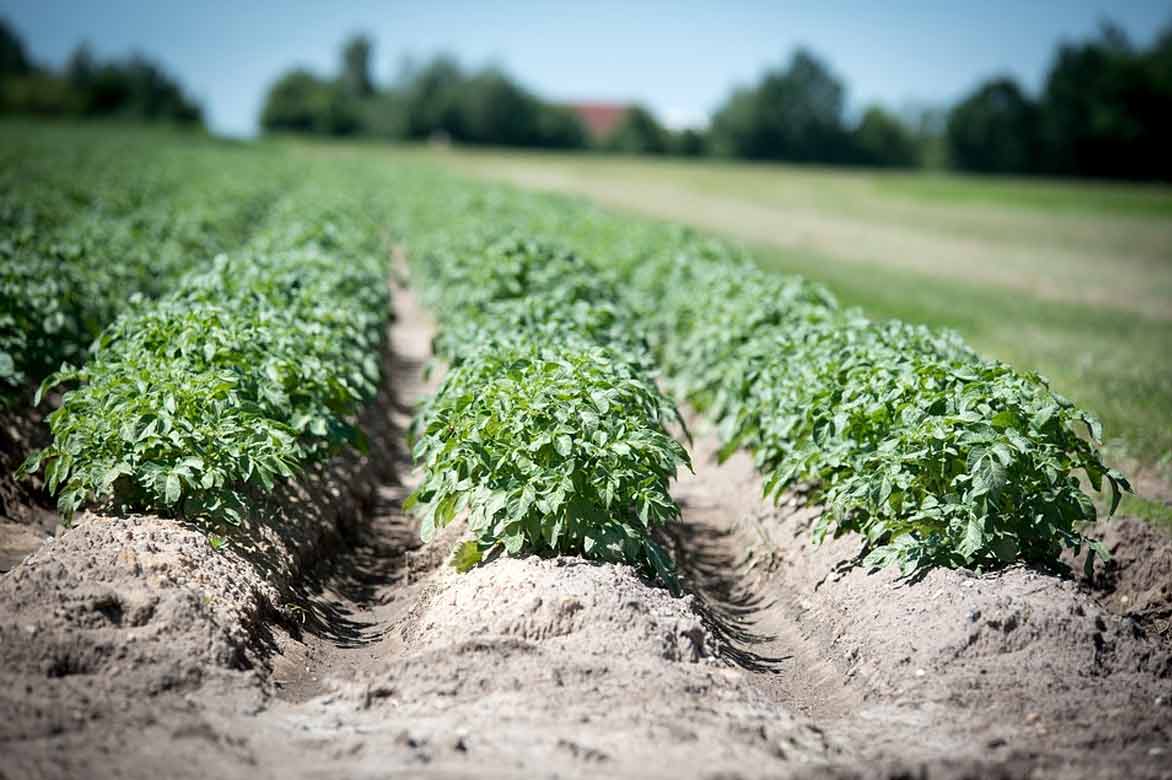
When the young plants of potato reach a height of 25 cm, draw soil up around their base to form a mound. Use a rake or hand hoe for this, being careful not to dig too deeply to avoid damaging the roots. Always ensure about 10 cm of foliage remains above the soil. Repeat the process about two weeks to a month later.
Hoeing potatoes
If your potato plants aren’t protected by a good layer of mulch, you’ll need to hoe them regularly to prevent the spread of adventive plants.
Watering potatoes
Being not very thirsty plants, potatoes generally don’t require watering, unless the weather remains dry for an extended period and flowering is underway.
Water preferably in the evening to enhance water absorption by the plants. Be careful to direct watering at the base of the mounds, avoiding wetting the foliage, as this will reduce the risk of fungal diseases.
Potential Diseases and Pests of Potatoes
Like all solanaceous plants, potatoes are susceptible to blight. This is a fungal disease caused by a fungus that thrives in warm, humid conditions. To avoid it, practise crop rotation and choose varieties resistant to this disease. Bordeaux mixture also provides good preventive and curative treatment against blight.
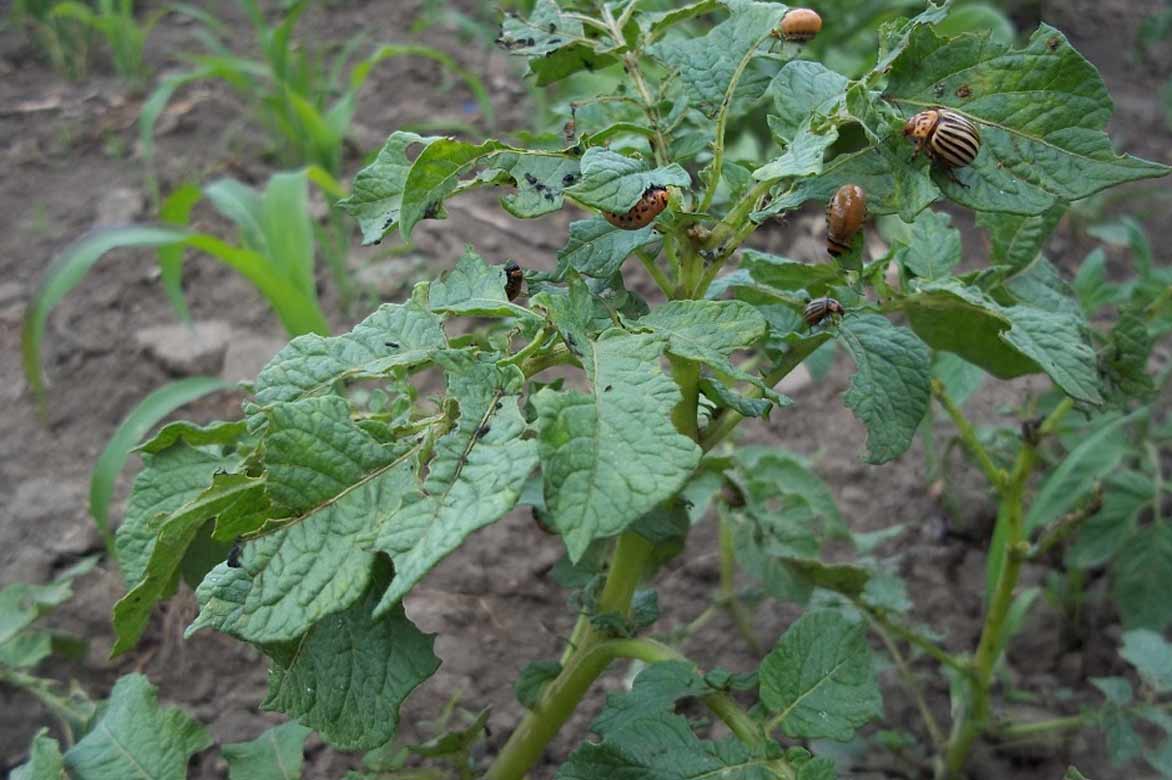
The Colorado potato beetle is the main pest of potatoes. Sowing flax near your young plants helps keep them away from the vegetable patch. Natural insecticidal treatments based on pyrethrum also provide effective control against this type of infestation.
→ Learn more about potato diseases and pests and common potato scab in Pascale’s advice sheets.
Multiplying potatoes
The potato never multiplies by sowing, as the tubercles obtained with this technique are often unusable, being too small. The potato reproduces therefore only by planting sprouted tubercles.
Pairing potatoes
To deter predators from potatoes, particularly Colorado beetles and nematodes, plant them alongside flax, cosmos, wormwood and garlic.
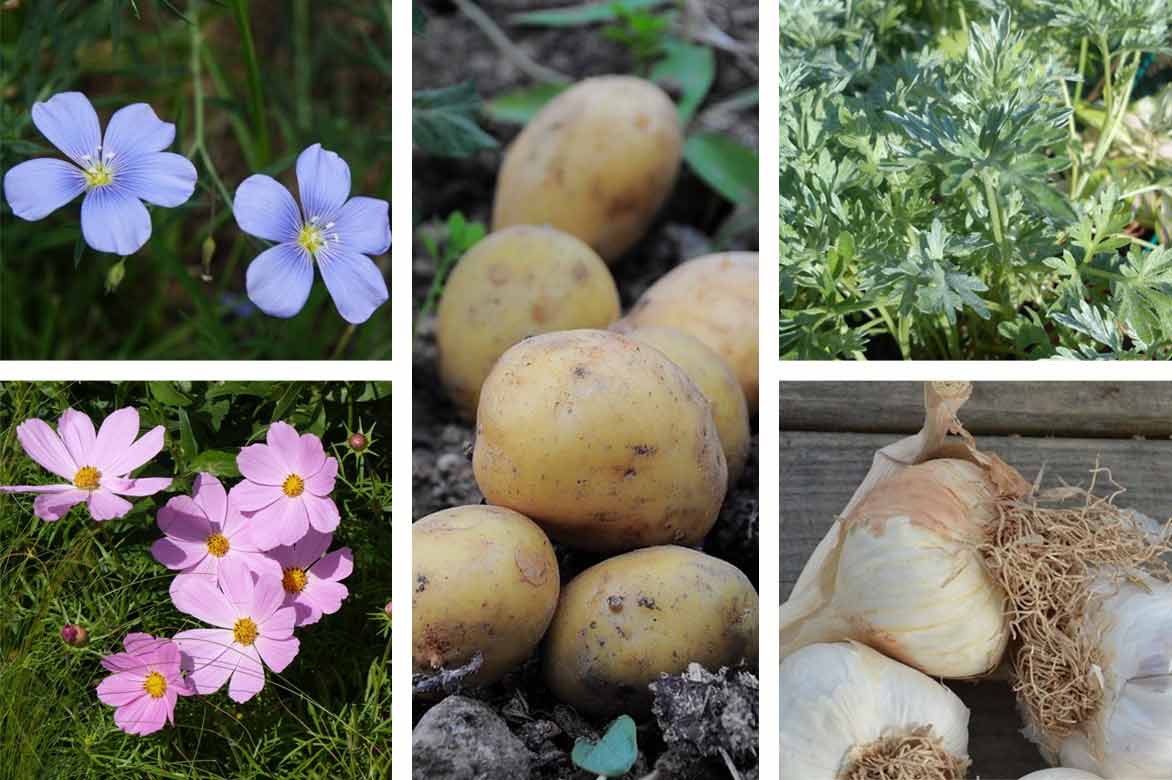
In the vegetable garden, potatoes also grow very well near maize, cabbages and legumes such as peas, broad beans and green beans. However, never grow potatoes near other nightshades like tomatoes, peppers or aubergines.
Useful resources
- Unsure which varieties to grow? Ingrid shares her expert advice to help you choose your potato young plants, while Pascale offers guidance on the best potatoes for chips
- To delve deeper, learn how to grow, harvest and store potatoes, and discover all our detailed advice for planting your potatoes
- Intrigued by the grass-grown potato method? Pascale provides all the keys to ensure your productivity
- Olivier and Louis explain everything about growing potatoes under mulch in Promesse de fleurs’ video advice
- Finally, earthing up potatoes will hold no secrets for you thanks to Servane’s tips
- Pascale explains how to make vegetable crisps, When to buy potatoes?, the best late-season potatoes, a guide to choosing and growing early potatoes and recommends potato varieties for oven baking, potato varieties for steaming
- Ingrid shares all her advice for growing new potatoes and for chitting potatoes
- Subscribe!
- Contents


































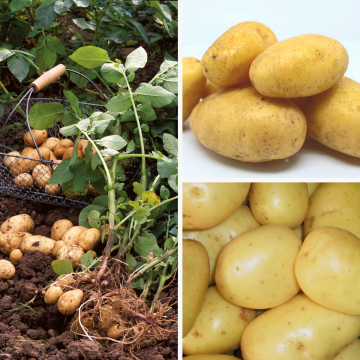
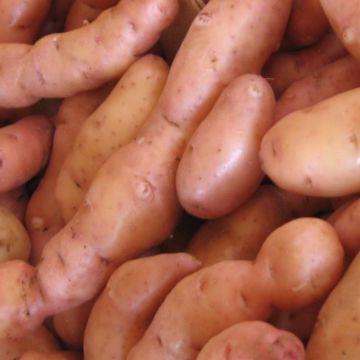
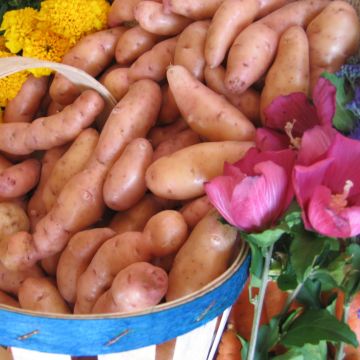
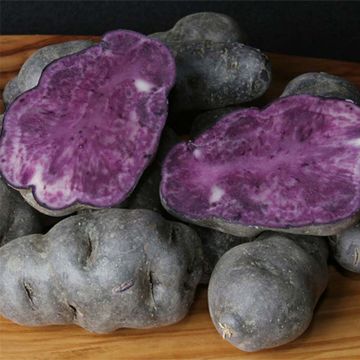
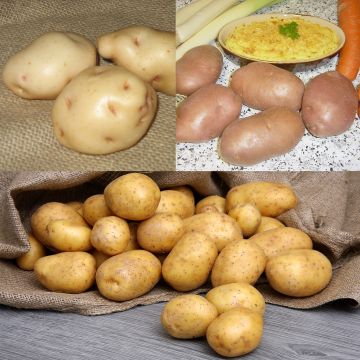
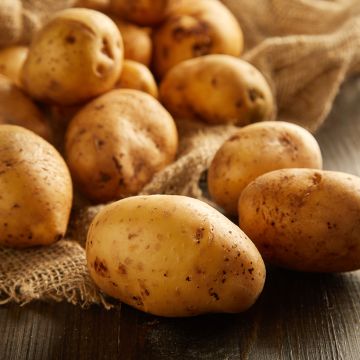
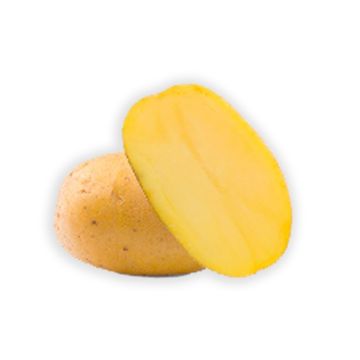
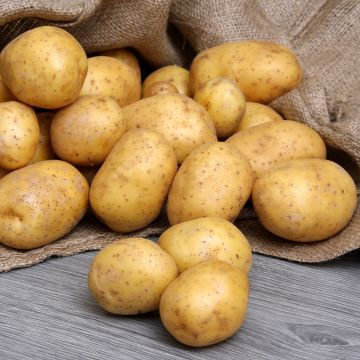
Comments